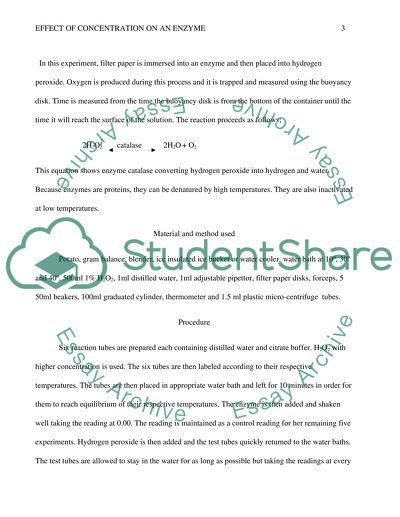Effect of Concentration on an Enzyme Essay Example | Topics and Well Written Essays - 1000 words. Retrieved from https://studentshare.org/chemistry/1451561-investigation-of-an-enzyme-catalysed-reaction
Effect of Concentration on an Enzyme Essay Example | Topics and Well Written Essays - 1000 Words. https://studentshare.org/chemistry/1451561-investigation-of-an-enzyme-catalysed-reaction.


